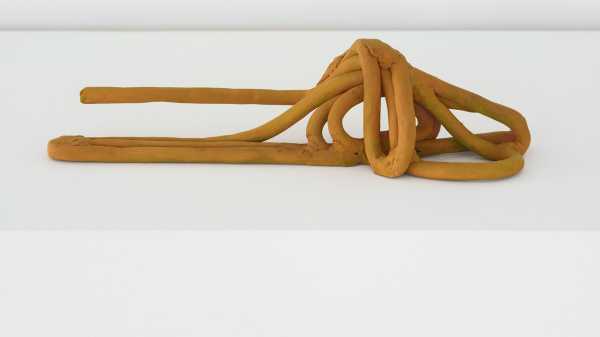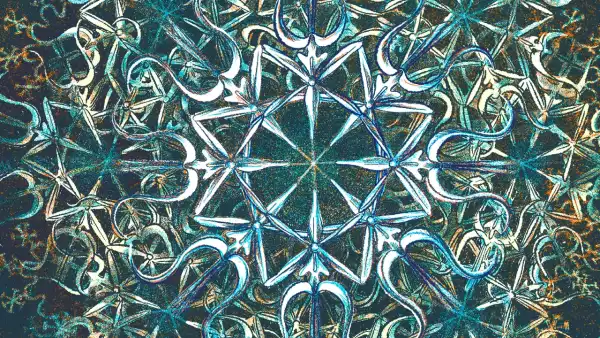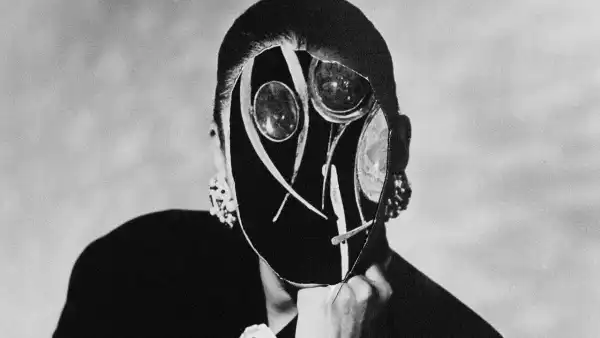
Save this storySave this storySave this storySave this story
The guys over at 15 Orient have been hitting a lot of home runs lately. Pardon the sports idiom: if you think of the art world as a competitive marketplace devoted to capital gains and winning with a team of star players, then the metaphor is apt. But the gallery’s founders, Paul Gondry and Shelby Jackson, accomplished a great deal with a minimum of flash and hollow hustling. The two friends, who started showing work in a Brooklyn space in 2016, managed to establish something rare—a commercial Kunsthalle where the power of aesthetics is the primary focus. In this way, they created their own market, where surprise is a key element of the enterprise.
Gondry and Jackson, who were both in their twenties when they founded the gallery, first used 15 Orient, which was in East Williamsburg then, as a place to show their own work. In 2019, Gondry stepped away from the gallery, and it moved to Jefferson Street in Bushwick, to a town house I never tired of visiting. Set a little back on a funky side street, the gallery had uneven floors and the walls were weathered, crumbling, and beautiful. Entering was like walking onto a movie set—one that combined certain elements from Stanley Kubrick’s “Barry Lyndon” (1975) and Roman Polanski’s moodily lit “Repulsion” (1965). The other artists that 15 Orient began to show more often than not fit perfectly on this set—especially the masterly Theodora Skipitares, whose gothic puppets, stage designs, and other creations seemed to enhance the building’s gorgeous erosion.
Last year, 15 Orient moved to downtown Manhattan, though its Web site continued to send visitors to Brooklyn. This seemed in keeping with Jackson’s deliberately out-of-step approach to marketing. Once I tracked down 15 Orient, on Walker Street, I was delighted to see that the new space has all the charm of the previous one—distressed walls, creaky floors—but, because it’s a loft, it extends horizontally, rather than vertically, through six high-ceilinged rooms. I was curious to see how the work of the painter Samuel Hindolo, with its lightly handled watercolors and faint pencil marks, would be installed, in the space’s inaugural show. The new (old) walls didn’t swallow the work up, and I left with a greater appreciation not only for Hindolo’s power and refreshing imagination but for Jackson’s ability to maintain the intimacy of a salon. (Jackson was joined in 2022 by the current gallery director, Ben Morgan-Cleveland.)
The sculptor Jilaine Jones is 15 Orient’s new star, and while the gallerists have given her the star treatment—her show “A Walk with D. Ann” (up through March 1st) is a solo retrospective—they present her work in an unadorned way that says simply, Here she is; we think she’s terrific, and hope you think so, too. I do. In fact, she’s so good—so inventive and energetic—that you feel embarrassed that the art world didn’t acknowledge that fact long ago. Born in London in 1959, Jones moved with her family to the United States in 1963. As a young woman, she studied at the College of Ceramics at Alfred University, and the School of the Museum of Fine Arts, Boston. Although she teaches and has shown work at the New York Studio School, this is her first gallery exhibition in New York since 2001.
The first time I went to “A Walk with D. Ann,” as I stood at the threshold of the exhibition, a sort of hum filled me from the inside. In the presence of Jones’s works, I felt an extraordinary sense of contentment. Taking a quick scan of the gallery, I was relieved to see that, unlike the work of a number of other contemporary sculptors, the twenty pieces on display hadn’t been tricked out. Everything Jones had devised was made out of simple, indeed humble, materials—clay, paper, steel, concrete—and she had personally crafted the sculptures, rather than having an assistant execute her designs. Her hand was everywhere. In fact, the first pieces I saw were about hands, and how the artist’s hands, in particular, are tools for transformation. The shapes that Jones’s hands make are transformed by her love of stillness.
In the first room, three pieces, in red fired clay, rested on a white platform. The series, from 2018, is called “Horizon in the Hand,” and the works look, at first, like Silly Putty that some child stretched into biomorphic shapes—arms, legs, hands—before dashing off for dinner. But that’s just a passing thought, because the level of sophistication, the tenderness of thought that Jones has put into these works, could only have been produced by someone who has an eye for, and an understanding of, how life shapes and reshapes us. In “Horizon in the Hand 2,” two figures appear to be entwined. Are they in the act of making love? Or are they “just” shapes? I would venture to say that these shapes are both bodies and something more: bodies in the act of exploring what it means to feel, to touch. The upper figure seems to have its bottom raised high, perhaps in mid-thrust; the one below looks receptive to a force that may be gentle or aggressive. That they share one long leg tells a powerful story of eros, and reminded me of the moment in Marianne Moore’s poem “Marriage” when Adam and Eve become one:
“I should like to be alone;
why not be alone together?”
Below the incandescent stars
below the incandescent fruit,
the strange experience of beauty;
its existence is too much;
it tears one to pieces
To be torn apart by beauty means that you have given yourself up to it; it obliterates you. And what continued to tear me apart as I walked through Jones’s show was her touch, something I don’t associate with many sculptors nowadays, when the forms are more often than not “monumental” or heightened by the use of unusual materials. Jones focusses on the work at hand, on how best to make the thing under construction as much like itself as it needs to be, wants to be. In “MacDowell Woods” (2014), a wall relief measuring eleven by ten by two and a half inches, Jones uses the simplest of materials to create a work that’s all about verticality. Bits of folded paper line up or are broken up on a field that includes smaller bits of paper at the base, creating a Chekhovian landscape that is a little dingy and a little tender at the same time. “MacDowell Woods” rests on a wall by itself, and you’re drawn to it both because it seems a little lonely there, and because of its fine craftsmanship. I hesitate to call Jones “crafty,” which might imply that she’s a folk artist. She isn’t. Her ambition is large and her own. You can’t measure her against others because she doesn’t measure herself. Rather, she’s in dialogue with herself and with the material.
Another piece from 2014, “Understory,” which is made of steel and clay and clay wash, juxtaposes the hard and the pliable with great ingenuity and care. Rods stick up from a crooked pipe on which a craggy pile of roughly formed concrete squares has been built. The squat and fat and the long and lean cast light on one another, and you feel as if you’d never seen these shapes juxtaposed before, even if you have. That’s the thing about an artist’s vision, particularly if the artist has a high style, as Jones does: she gives new meaning to the familiar, and before you know it you’re sailing along into the unknown.
Jones’s largest sculptures, such as “Time in the Study” (2010) and the incredible “What Surrounds Her House” (2008), suggest items that have been pulled up from the ocean floor (Jones has a particular fascination with erosion) and viewed through a David Lynch lens. “Time in the Study” is a large steel structure, measuring ninety-seven by a hundred and eighty-five by thirty-seven inches, that resembles a ship without a hull. Several steps lead up to a galley or a plank, but you can’t enter the structure, because the deck is nonexistent. Long steel bands droop and sag in front of the piece, reminiscent of Eva Hesse’s great, funny pieces, like “Hang Up” (1966), in which a rod juts out of a frame, then circles back into it. Jones’s seriousness is enlivened by humor, and a big white anthropomorphic head shape at the base of “What Surrounds Her House” looks just like the creature gasping for breath in Lynch’s “Eraserhead.” It’s creepy, but we want it to live.
I don’t know what Jones’s relationship is to movies or indeed to any art form besides sculpture because she so resolutely lives in the medium, but for the viewer the combination of the cracked concrete, the rusty pipes, and so on, with the air around the work—the element that ages us all—evokes the idea of excavation, all that has been dug up and examined and has taught us something about the past. Wandering through Jones’s work is like standing on the edge of an archeological dig. You don’t know what to expect but you’re excited to discover it, to be filled with the sadness of time and the glory of things being brought into the light. ♦
Sourse: newyorker.com







